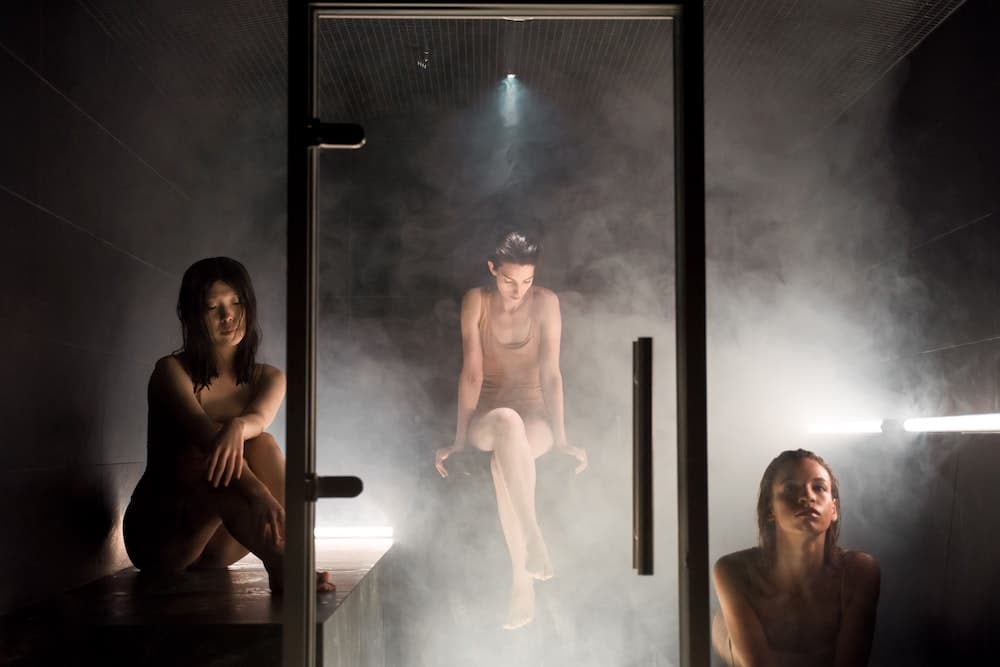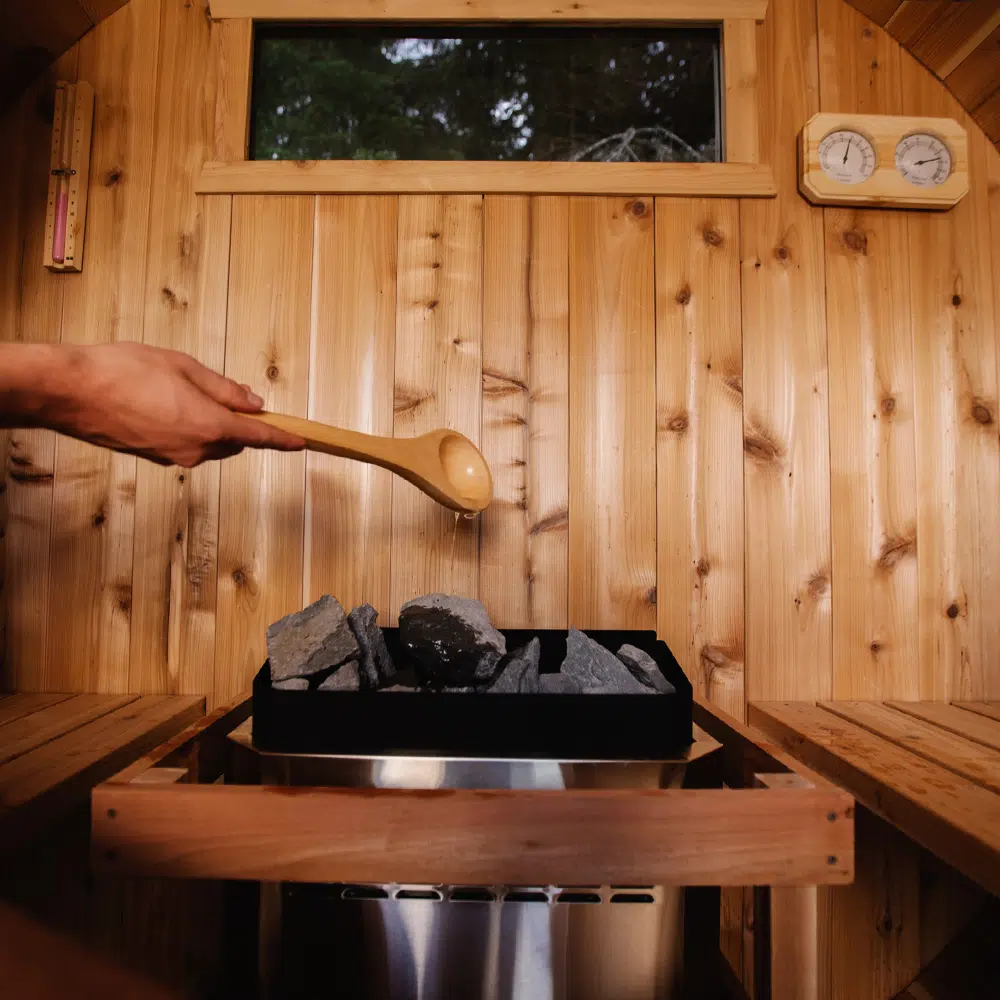By now you know that regular sauna bathing has numerous health benefits. From better sleep and boosting the immune system to ridding the body of toxins, it’s easy to see why the Finns have made it a part of their daily life for thousands of years.
Whether you’re new to the practice or have been sweating it out for a while, you might be wondering what the ideal sauna temperature is. As with so many things in life, the short answer is: it depends.
There are a lot of factors to take into consideration, such as the type of sauna, your personal preferences, your current state of health and so on. While there are definite guidelines in terms of temperature range, it’s important to remember that everyone is different.
What you perceive as scorching might be someone else’s comfortably warm. How hot a sauna is (or isn’t) will also depend on whether you’re sweating it out alone or in a group. Sauna bathing with other people can be an enjoyable social experience, but you will have to compromise on how much you crank up the heat.
Sauna Temperature Ranges Vary According to the Type of Heater
There are essentially three types of saunas, each with their own heating system and temperature range. Which one you choose to go with will depend on your personal preferences as well as what’s available to you.
The traditional Finnish sauna is the most commonly known and widely enjoyed. The wood interior provides an appealingly natural setting to enjoy some quiet time. However, the higher temperatures won’t appeal to everyone.
Other options include the more contemporary infrared saunas, which typically offer much lower temperatures. Finally, the steam sauna is ideal for those who favor a high humidity and lower heat.
Traditional Finnish Sauna
Traditionally heated with a wood-burning stove, the Finnish sauna’s more modern counterparts rely on an electric heater to raise the temperature in the room.
In principle, both function in the same way. Water poured on the hot stones produces steam that’s pleasant to sit in and offers health benefits for your skin and respiratory system.
While the wood-heated option is still a popular choice for many, temperatures aren’t as precise. Electric heaters are equipped with a heating element that allows you to maintain the heat to your liking by setting an upper limit. The heater then switches off and on automatically in accordance with that.
As for the ideal temp for your Finnish sauna experience, it varies from country to country. In North America, 160 to 194 Fahrenheit (71–90 Celsius) is the standard. European countries prefer things a little warmer, with allowed temperatures ranging from 160 to 220 Fahrenheit (71–104.5 Celsius).
The Finnish Sauna Society (and they should know) suggests that sauna temperatures range from 176 to 194 Fahrenheit (80–90 Celsius) and absolutely no higher than 212 Fahrenheit (100 Celsius).
The Rule of 200
Another way to determine the best temperature in a traditional Finnish sauna is to use the Rule of 200. According to the rule, people feel most comfortable when the combined temperature and relative humidity equals 200 Fahrenheit (92 Celsius).
For example, if the temperature in the sauna is 170 F, the humidity could go as high as 30 percent before one starts to feel uncomfortable.
The humidity should go down naturally as the temperature rises, however you’ll need to invest in a sauna thermometer and hygrometer combo to accurately determine this.
Infrared Sauna
Infrared saunas run solely on electricity, producing heat via infrared heating panels. The resulting infrared waves penetrate deep into the skin’s pores to encourage sweating.
Rather than heating the space around you, the infrared sauna heats you from the inside out. The required temperatures are therefore quite a bit lower than the traditional Finnish sauna.
On average, temperatures range from 100 to 150 Fahrenheit (38-65.5 Celsius) for this type of sauna. Although some suggest a range of 140 to 150 Fahrenheit (60–65.5 Celsius) to achieve maximum benefit.
With a much lower price tag, Infrared saunas are an ideal solution for those wanting a sauna experience at home. And because their average temperature is much lower, you can also enjoy longer sweat sessions.
Steam Sauna
Also known as a steam bath or steam room, the steam sauna operates in an entirely different way to either the traditional or infrared sauna. The steam generator boils water, warming you by steam rather than dry heat.
Because the steam sauna is entirely airtight, humidity levels can reach 100 percent. However, this is offset by much lower temperatures, which are in the region of 90 to 120 Fahrenheit (32-49 Celsius).
Even so, the much higher level of humidity does make the steam sauna feel much warmer. You can also expect more sweating than you would in a traditional dry heat sauna.

How Hot Is Too Hot? Safety Tips to Keep In Mind
Regardless of the sauna type — traditional, steam or infrared — sweating it out in a sauna is a great way to indulge in some welcome R&R.
That said, it’s important to keep safety front of mind when sauna bathing. For one thing, there is such a thing as too hot.
The World Sauna Championships, which took place in Finland from 1999 to 2010, were canceled following the death of Russian competitor, Vladimir Ladyzhenskiy, who suffered severe burns in 230 Fahrenheit (110 Celsius) heat.
While extreme, the story serves as a reminder to not be too cavalier about sauna bathing. These are some things to keep in mind before, during and after your sauna.
Slowly Does It
Building up the temperature gradually will give your body time to adjust to the heat. You’ll probably enjoy the session more, as well.
Be Aware
Keep a close eye on how you’re feeling. Nausea, dizziness and lightheadedness are all sure signs that you need to end your sauna session.
Don’t Overdo It
If you’re a beginner, 5-10 minutes is ample. Regular sauna bathers can stay longer, but definitely not more than 15-20 minutes.
Hydrate
Make sure you’re hydrated before entering a sauna and drink at least 2-4 glasses of water after your session.
Alcohol Is a No-No
Alcohol and saunas do not mix well. Being even slightly inebriated can impair your judgment and leave you dehydrated. There’s also the risk of falling asleep in the sauna.
Check In With Your Doctor
While sauna bathing has numerous health benefits, there are potential risks to take into account. If you’re pregnant, elderly or have pre-existing health conditions, it’s wise to consult your GP first.
Final Thoughts on Ideal Sauna Temps
The sauna types mentioned above all have their own ideal temp range and benefits. You won’t go wrong, whichever one you choose. Ultimately, it comes down to what you determine to be the best heat and moisture level for you.
The two most important things are safety and enjoyment. Get those right and you’re bound to get maximum benefit from the time you spend sauna bathing. Who knows, it might even inspire you to build a barrel sauna from scratch.
If that sounds like too much work, why not consider one of our cedar barrel sauna kits? Manufactured in Whistler, British Columbia using sustainably sourced second-growth cedar, you can assemble it yourself or have one of our certified installers do it for you. Take a look at our FAQs to find out more about our saunas.



